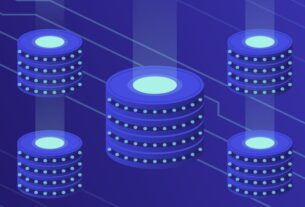Contrary to people’s beliefs, not all cyberattacks come from malware and viruses. One of the thousands of ways cyberattacks occur is through what is known as a “similar domain attack.” A similar domain attack is an often overlooked threat that can cost businesses serious money, disruption, and reputational damage.
It occurs when a malicious actor tricks consumers into thinking they’re interacting with your business by creating identical or nearly indistinguishable websites under different domains.
To make matters worse, often, the only clue that both sites are not from the same domain is a slight variation in their name or spelling, making it difficult for unsuspecting customers to spot.
With so much on the line, organizations need to take proactive steps to protect their brand and customers by preventing similar domain attacks. In today’s article, we will give a detailed look into a similar domain attack and discuss how to prevent similar attacks.
Let’s dive in ASAP.
What is a Similar Domain Attack?
Security experts have coined a special term for certain types of cyberattacks: similar domain attacks. Such malicious activities work when an attacker registers a domain similar to an existing one with slight differences in spelling or language.
Most of the time, it is too small to be noticed, and unsuspecting visitors click on the link instead of the original one. For example, suppose someone is looking for company XYZ’s website. In that case, they might type in a variation of the URL that appears legitimate, such as changing the spelling of the company name or switching out a character such as “.co” instead of “.com.”
If done correctly, this slight change can lead unsuspecting users to an entirely different website created to look like the one they intended to visit. Through this ploy, malicious actors can harvest credentials and sensitive information from unsuspecting visitors and cause other financial damage.
The truth is that the effect of this dubious action comes in two folds: on the brands and other customers. Let’s check out the impacts of a similar domain attack on brands and customers.
Impacts of Similar Domain Attacks on Brands
Brands have become increasingly susceptible to digital attacks such as domain similarity or hijacking. According to a study by the Neustar International Security Council (NISC) in September 2021, 72% of those who participated reported that they had experienced a DNS attack within the last 12 months.
Such digital violations can ill-affect any business size if necessary measures are not taken. Here are some of the negative impacts a business can experience following a similar domain attack:
Loss of Customer and Revenue
Similar domain attacks on brands can be so bad that they can cause significant losses to customers and revenue. This is how it works; when a customer clicks on the wrong link and is redirected to a malicious website, they will not bother to check whether the URL is legitimate; not everybody is sensitive to that.
Unfortunately, these incidents may lead to customer distrust and cause them to abandon a brand altogether.
Reputational Damage
Brands require a good reputation to remain marketable and successful. Building a good brand reputation is not achievable overnight; it takes months if not years. Therefore, brands must handle their digital presence and other aspects of their business with great care.
However, similar domain attacks can instantly tarnish a brand’s name. When customers unknowingly enter the wrong URL, it may lead to significant reputational damage as they become victims of phishing and cyber scams.
Impairment or Collapse of the Website’s Reputation in Search Engines
While website reputation is paramount to brand health, a similar domain attack can cause catastrophic damage. How? A malicious actor can craft a similar website to your organization and populate it with spammy content.
This means that search engine crawlers will find the malicious site more credible than the legitimate one and rank it higher in search engine results. As such, customers may unknowingly click on the wrong website and be led to dubious activities.
Impacts of Similar Domain Attacks on Customers
Similar domain attacks can affect customers more severely than the brands they target.
Here are some of the impacts customers experience when similar domain attacks occur:
Stolen Identities, Bank Accounts, and Other Personal Information
Domain attacks, such as stolen identities, bank accounts, and personal information, can majorly impact customers. Attackers can use stolen information to commit fraud, leaving the attack’s victim with financial costs and time spent trying to restore their identity.
Additionally, attackers can hijack an online account linked to products or services beyond financials, such as IT systems and email accounts that may be used for business purposes.
A domain attack makes it possible for malicious actors to gain unauthorized access to users’ networks, contributing to breaches of confidential information in many cases.
Malware Attack and Theft of Funds
Similar domain attacks can also lead to malware attacks and theft of funds. When customers click on the wrong link, they may be led to malicious websites where their details, such as credit card information and bank accounts, are stolen. Through this means, IBM accounted that about $812,360 had been lost due to a data breach in 2022.
Additionally, attackers can integrate malicious software into websites that infect your device with viruses or other types of malware. Such malicious programs can ruin computer systems and disrupt business activities.
Loss of Credibility and Trust
This happens because customers may believe the company cannot protect its website, leading them to think twice about using its services. When customers no longer trust a website, they are less likely to visit it and purchase.
Preventing Similar Domain Attacks
As domain attacks become more sophisticated, organizations must prioritize their security practices.
Here are five steps you can take to protect yourself from similar domain attacks:
Perform Regular Website Audits
One of the ways to mitigate against similar domain attacks is to perform regular website audits. Website security audits examine the configuration and implementation of a web application and its content and identify any weaknesses or vulnerabilities on an organization’s server or network.
Auditors look at access controls and potentially malicious code and check patch levels to find any existing issues before attackers can exploit them.
Additionally, regularly scheduled tests can also measure the effectiveness of new security policies and implementations that have been put into place. These precautions are vital to ensure high standards across cybersecurity measures to protect organizational assets from similar domain attacks.
Monitor Your Domain Names
Organizations should monitor their domain names for new registrations that could be potential forgeries. To do this, organizations can use a tool for domain management to detect and alert organizations of any suspicious activity related to their domains.
Furthermore, with this tool, your brand can monitor domain registries and detect suspicious activity like typosquatting, homoglyph attacks, or deceptive look-alikes of your branded name. By implementing Red Point’s tools, your brand can minimize the risk of a related attack by creating active guardrails that better secure your site and safeguard against identity theft.
Red Point also offers various features for domain management, such as renewing domain names or setting up an automatic renewal process. Hence, you never have to worry about losing your brand again.
Implement Multi-Factor Authentication
Multi-factor authentication (MFA) protects data and websites against similar domain attacks. MFA requires users to verify their identity through two or more independent factors such as passwords, one-time codes, biometrics, or a physical token.
By implementing MFA, you can ensure that only legitimate users can access sensitive data and resources, reducing the likelihood of a successful similar domain attack.
Maintain a Constant Eye on New and Existing Domains
As a brand, endeavor to monitor all new and existing domains to identify cybersecurity threats. With the right tools, organizations can detect suspicious activities like typosquatting, homoglyph attacks, or deceptive look-alikes of your branded name.
Additionally, you should create watchlists to track all new and existing domains that contain a variation of your brand’s name. This allows you to take the necessary steps before any malicious actors can hijack your domain name and drive traffic to their website.
Wrapping Up
Similar domain attacks are a serious threat that organizations must take seriously if they want to protect their data and customers. To prevent such attacks, businesses should perform regular website audits, monitor their domain names, implement multi-factor authentication, use domain registration lock services, and constantly monitor new and existing domains.
With the right security measures, businesses can protect themselves from similar domain attacks and safeguard their customers from becoming victims of malicious activities.



